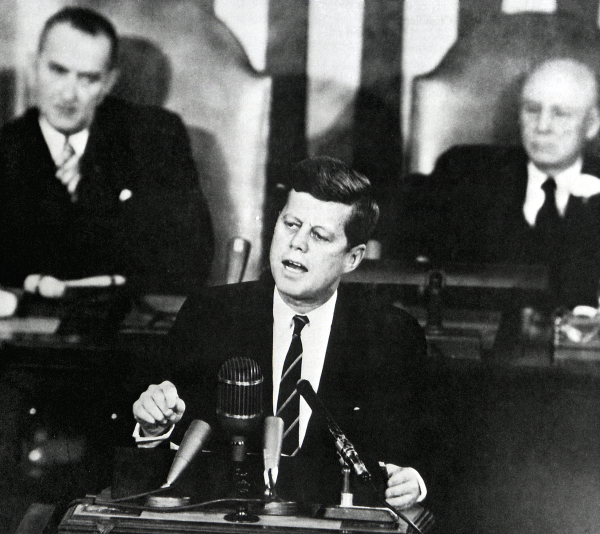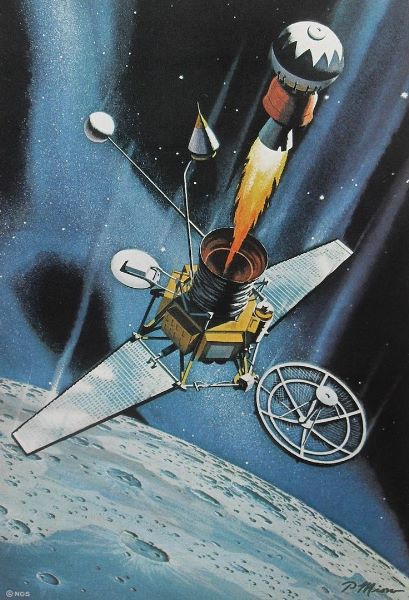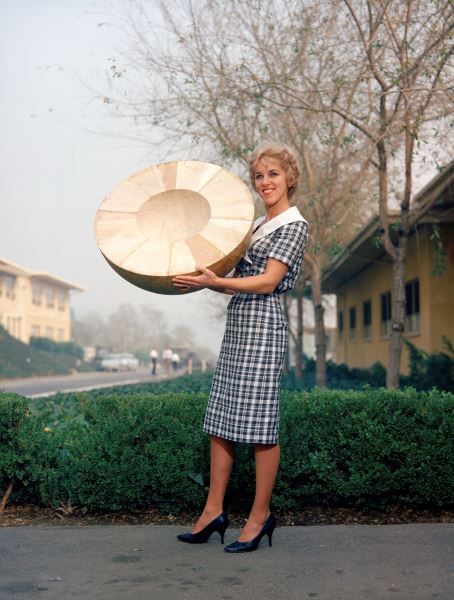
by Gideon Marcus
November 1961 been an exciting month for space buffs with several sequels to exciting missions as well as one brand new satellite.

For instance, the fourth Transit navigational satellite went up on November 15. Not only did it carry a little nuclear reactor for power, but it also had a piggyback pal. Called Transit Research and Attitude Control (TRAAC), it's a little research probe designed to try a new method of stabilization. You see, an object launched into orbit will have a tendency to tumble. There are active methods to right a satellite, like engines or gyroscopes. TRAAC uses a passive method, employing just its shape and the tidal force of the Earth. It's an exciting experiment.

The Air Force was two for three this month with their reconnaissance programs. Discoverer 34, on November 5, and Discoverer 35, on November 15, were sent into space to spy on the Soviet Union. Each had a little camera on board and a capsule for sending film back to Earth. Both craft made it into orbit, and at least the latter mission's payload was recovered in a daring (but now routine) mid-air catch by a plane. Only the boys in blue know whether the targets were a Soviet base or skinny dippers on the Black Sea. Samos 4, launched November 22, failed to orbit.
By the way, it's going to get harder for me to give you the skinny on military missions. While Eisenhower was rather cavalier about letting the Soviets know what we're up to, probably to show off, President Kennedy has put a lid on spy flights. Newspapers aren't covering them much anymore, and the details we do get are sketchy. Just be aware that, at any given time, there are robot shutterbugs in orbit, taking snapshots of Nikita. And maybe of you.

On to the civilian world: the second Moon probe Ranger probe was a bust, just like the first. It's a shame because these two missions, comprising the first iteration of the probe known as "Block 1," were designed to do some excellent sky science. They weren't aimed at our celestial neighbor. Rather, they were to be flung into high orbits for engineering tests and cosmic investigation. The next mission, a Block 2 lunar impactor, is planned for January 1962.

But the real NASA news this month involves a little primate named Enos. Yesterday, for the second time, an Atlas booster roared into the orbit from Cape Canaveral with a Mercury capsule at its tip. Unlike the last one, however, Mercury-Atlas #5 (the first three had been suborbital missions) carried a passenger. The 37.5 pound chimpanzee circled the Earth twice before safely splashing down some 255 miles southeast of Bermuda.
Just as the launch of a chimp presaged Alan Shepard's suborbital flight in May, so Enos' jaunt paves the way for astronaut John Glenn to be the first American in orbit in just a few weeks (weather permitting). Now, the flight was not entirely flawless. A roll reaction jet failed, and one of the components of the electrical system overheated. As a result, Enos' capsule returned to Earth after just two of the planned three orbits. But, had a human been on board, he could have compensated for these issues, easily.
That's the bigger story, to me. I know some people wonder why we bother to send people up into space when electric implements have proven capable enough, and cheaper. And there is certainly a segment of the flyboy population that snickers at the thought of test pilots relegated to following in the furry shoes of ape predecessors.
Yet, in MA-5, we have the reason. No monkey and, as yet, no machine can react with the speed and intellect of a human. Moreover, no machine can think creatively, adapting to an evolving situation beyond a few set scenarios programmed into its core. Imagine if an astronaut were flying the Discoverer missions. He'd have the discretion of choosing the targets to photograph. He'd be able to bring a film capsule home with him rather than relying on complicated automatic systems and aerial recovery planes.
When John Glenn flies, he will return far more information about the universe than any experiment or animal could, not just scientific, but about the human condition. For 270 minutes, he will be an outpost of the Free World in space. What will it mean to him, to all of us, his three circuits of the globe?
We can't know until he gets there, but I'm betting it will be profound.

















